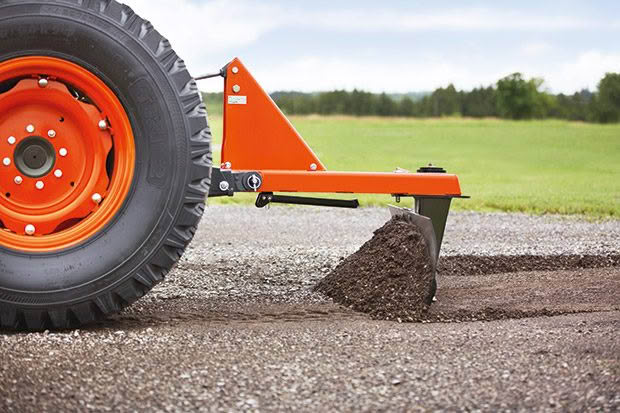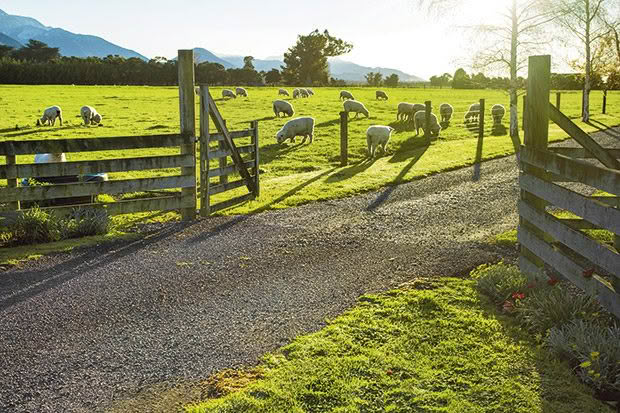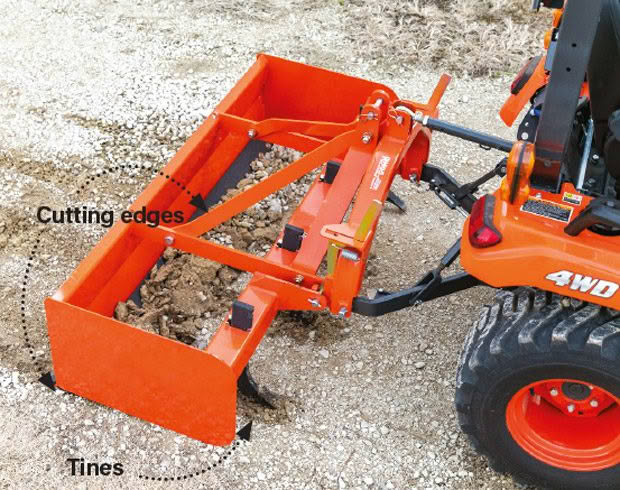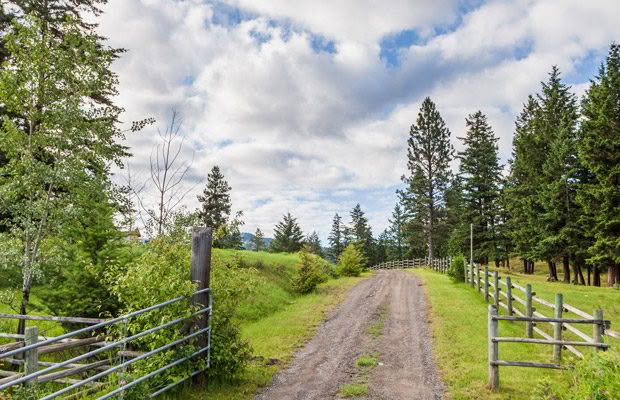Why every driveway needs a tractor with the right blade

Even a well-designed driveway needs regular maintenance, and there’s one accessory that will help it make the grade.
Words: Nadene Hall
A driveway can tell you a lot about itself. If it’s in poor condition, it may be due to bad design. If there are no drains on either side, it probably IS the drain in heavy rain. If it has a thick layer of new gravel on it, somebody may be trying to hide its worst features.
Keeping a driveway in good condition requires regular maintenance. That’s most easily done using a tractor with a rear-mounted steel blade attachment. Another more basic option is the box blade.
A good driveway has a few key components that will need regular care:
– the correct shape with a ‘crown’, so water falls away to the sides instead of sitting in low spots and forming puddles;
– well-formed ‘shoulders’;
– wide, flat-bottomed ditches on both sides;
– a mix of gravel containing large to small stones, and ‘fines’ (the dust that puffs up if you drive over it at high speed).

Driveways require regular shaping due to damage from the weight of vehicles, poor driving techniques, and rain.
However, regular use, poor driving technique (travelling too fast, skidding, changing gear on slopes), and heavy rain will erode even the most well-designed driveway.
A rear blade attachment is crucial for reshaping a driveway and maintaining a good quality driving surface, especially if it’s long and/or steep.
THE RIGHT SIZE TRACTOR
It takes a fair amount of power and torque to carry the weight of a grader blade, maintain downward pressure on a hard surface, and pull or push large amounts of gravel.
You’ll need a tractor with at least 16hp for a basic, small rear blade. The larger and more powerful the tractor, the heavier and wider the blade it can handle and the more features it will have for more complex landscaping.
A tractor will also need a three-point linkage on the back and the correct pins to fit the blade you want to use.
THE RIGHT SIZE BLADE
A basic blade for a 16hp tractor will weigh around 120kg and be around 1.2m wide. It’s important to match the blade’s size and weight to your tractor’s horsepower, says agricultural machinery expert Ben Primrose of Implements Direct.
“People often buy a grader blade on price, say a 4ft grader blade which is designed for a 25hp tractor, but it will be too lightly built and too narrow to use behind a 60hp tractor. Same goes in reverse – people with an 18hp tractor will buy some old rusty heap on TradeMe, some relic off a farm made for a 60hp tractor, but their 18hp one won’t lift it.”

Width is also critical. Basic blades sit in line with the rear of the tractor. Larger blades can be offset to either side. “It’s important to choose a grader blade which is at least the same width as the tractor, if not a bit wider,” says Ben.
“An offset feature means it can hang out one side, which is useful for clearing out or forming drains on the sides of a driveway.”
A GOOD BLADE WILL HAVE:
– tilt options, so you can angle it to form a camber or drains;
– turn options, right round to 180° so you can also use it like a bulldozer to push gravel or dirt;
– a replaceable cutting edge (so you don’t need to buy a completely new blade when it wears out);
– a high, curved moldboard (the main body of the grader);
– end plates which stop the gravel from being left behind as it reaches either end of the blade.

More expensive options on larger blades include hydraulics to control the tilt and angle of the blade.
WHAT IS A BOX BLADE?
A box blade has steel tines or ‘teeth’ spaced along the front which rip up a dirt or gravel surface. Cutting edges on both sides of the box’s rear panel are used to pull or push it until it’s smooth. “Box blades are popular with lifestylers as they take less skill to use (than a blade),” says Ben. “They’re very simple, with no pivot points to adjust.”
A box blade is a good option if you have a flat, mostly even driveway. “They simply work by scraping the material up. It collects in the box section of the blade, and as it builds up it falls into the low spots, filling them in and smoothing them off as you go.”
MORE HERE
Love this story? Subscribe now!
 This article first appeared in NZ Lifestyle Block Magazine.
This article first appeared in NZ Lifestyle Block Magazine.
